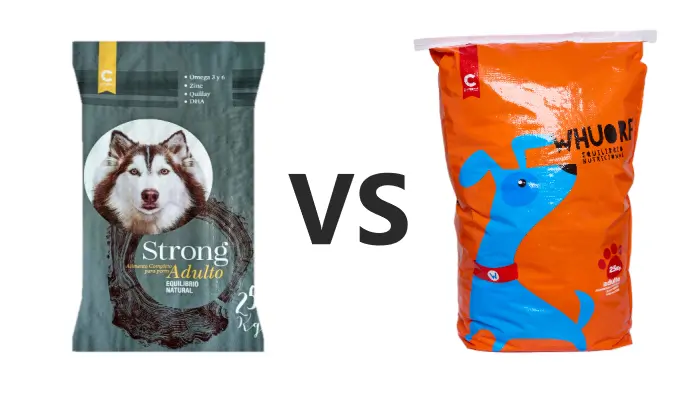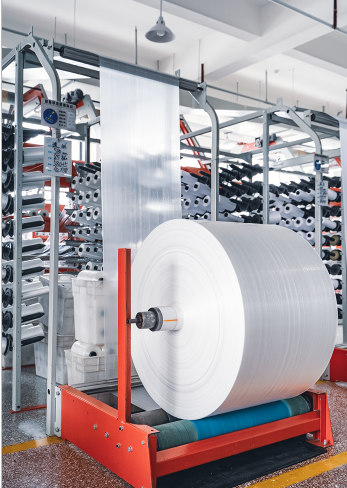
Whether you are running a business related to food, fertilizer, or any other goods, you’re likely to encounter different packaging materials, including PP and BOPP bags. At a glance, these thin plastic bag materials may seem interchangeable. However, polypropylene (PP) and biaxially-oriented polypropylene (BOPP) films offer quite different properties significant to industrial packaging selection.
When is each material preferred, and what performance differences justify the price premiums commanded by BOPP over standard PP films?
Let’s break down how these two ubiquitous industrial packaging films compare across critical metrics affecting protection, shelf appeal, processability, and end-use suitability.
What is the raw material for Bopp bags? BOPP bags share the same base plastic resin as standard PP films – polypropylene polymer. Yet BOPP films utilize a drastically different manufacturing process that enhances numerous properties through machine-direction and transverse-direction orientation as the film is produced.
This biaxial orientation step aligns polymer chains and induces crystallization, transforming the isotropic PP resin into an anisotropic film structure optimized for packaging duty. Let’s examine how orientation makes BOPP stand out.
While BOPP and polypropylene woven bags share polypropylene resin feedstock, custom polymer grades and additives tailor properties for each film type. Production processes also diverge drastically as orientation imparts enhanced mechanical, optical, and other performance upgrades to BOPP.
PP films utilize general-purpose homopolymer and copolymer polypropylene resins with melt flow indexes optimized for less demanding extrusion processes. Common additives like calcium carbonate may be incorporated as low-cost fillers.
Meanwhile, BOPP production favors specially formulated high-clarity random copolymer PP grades to maximize optical properties. Carefully selected co-monomers and proprietary additives package combinations enhance processability, clarity, and downstream convertibility.
PP film production utilizes a relatively simple single-stage extrusion process with rolls stacked to reduce film gauge and apply machine-direction orientation only. The cooling rate is gradual as the molten plastic forms into a film web.
Conversely, BOPP film is first cast from the melt curtain, then undergoes additional rapid heating and simultaneous biaxial orientation in the machine and transverse directions. This carefully controlled process induces polymer chain alignment and crystallization that enhances film properties.
Thanks to orientation, BOPP film appears more transparent with a highly smooth surface sheen compared to the slight opacity and hazier matte-like appearance of non-oriented PP packaging films. BOPP feels stiffer, exhibiting less elasticity during handling. The audible crinkling noise gives away BOPP’s higher crystallinity.
What keeps polypropylene as the workhorse plastic packaging material across countless industries comes down to raw economics and process flexibility. PP resin prices sit 20-30% lower than specialty BOPP grades. This cost advantage translates into budget-friendly bags, liners, and bulk sacks ideal for basic transportation and storage uses not requiring retail-ready finish.
While plain PP films lack the dazzling clarity, toughness, and barrier of BOPP, unoriented films fall short on high-end packaging optics and protection. PP scuffs easily, lacks stiffness for structured bags, and shows lower resistance to punctures, temperature extremes, and chemicals – shortcomings ruled out by upgraded BOPP films.
Meanwhile, specialty BOPP resins do command premium pricing, limiting use to high-value items. The orientation process relies on meticulous temperature and tension control, which is less forgiving than basic PP extrusion. Still, for critical consumer packaging needs from food to medical devices, BOPP delivers.
Delving deeper into technical specifications reveals how biaxial orientation transforms BOPP’s capabilities relative to standard polypropylene films optimized for more basic transport duty.
Machine-direction tensile strength of BOPP films exceeds 300 MPa with similar 150+ MPa transverse direction values. This exceptional toughness comes from polymer chain alignment. Comparatively, plain PP films only achieve 35.7 MPa tensile strength.
BOPP’s very high stretch ratios before puncture or tearing also prevent damage to packaged contents. PP films puncture more easily under load.
Minimized haze and exceptional transparency ratings down to just 1-2% make BOPP ideal for retail packaging. PP films appear more opaque at 11% haze.
With measured oxygen transmission rates below 1603 cc/m2, BOPP provides a moderate barrier that helps maintain food freshness and prevent oxidation. Non-oriented PP film has essentially no inherent oxygen barrier.
With over 20 years of specializing in polypropylene conversion and fabrication, Xifa Group provides a comprehensive range of PP and BOPP packaging solutions for industrial markets. Our facility houses integrated extrusion, printing, BOPP laminated woven bag production, and woven sack lines to deliver high-quality products on demand.
Get A Quote For Your Packaging Solution >>
We produce tailored PP woven sacks, multi-wall paper bags with PP liners, raffia bags, and many other configurations to fulfill a spectrum of packaging duties. These transport bulk goods for customers in the agriculture and food ingredients sectors.
For consumer-facing packaging and primary food contact, we also manufacture high-clarity printed BOPP film pouches, bags, and liners. BOPP’s enhanced optics and durability make it ideal for retail packaged goods, from snacks to dried fruits and nuts.
As a certified operation, we impose rigorous quality control standards to ensure reliable protection and appeal. Customers can request PP and BOPP solutions tailored to their unique specifications regarding dimensions, thicknesses, coatings, and print design. Contact us today to request samples.
When selecting plastic packaging materials, it’s important to match performance characteristics to application requirements. Standard polypropylene (PP) films offer cost-effective transport and industrial bag solutions. For more demanding retail and consumer uses, upgraded biaxially-oriented polypropylene (BOPP) brings enhanced strength, clarity, and appeal.
As a leading integrated manufacturer of both PP and BOPP bag solutions, Xifa Group has the expertise to recommend optimal constructions for your specific needs. Contact our engineers today to review your project and request samples of our quality PP and BOPP packaging options.




